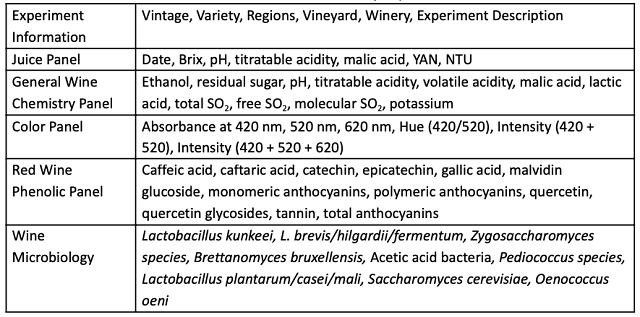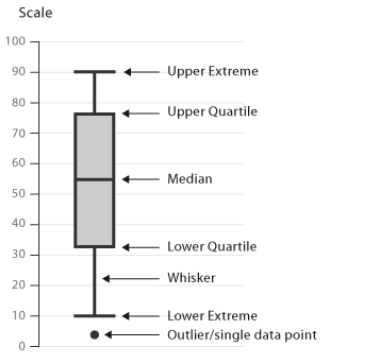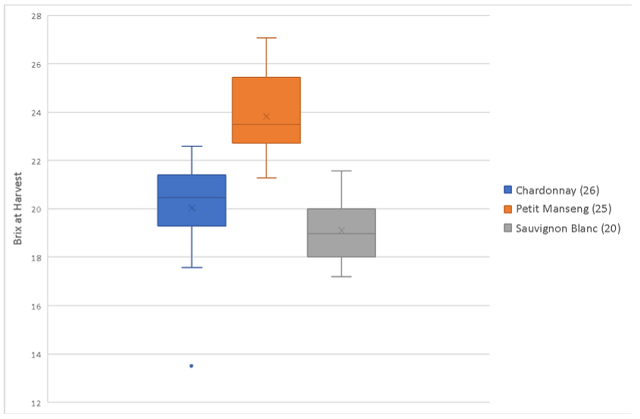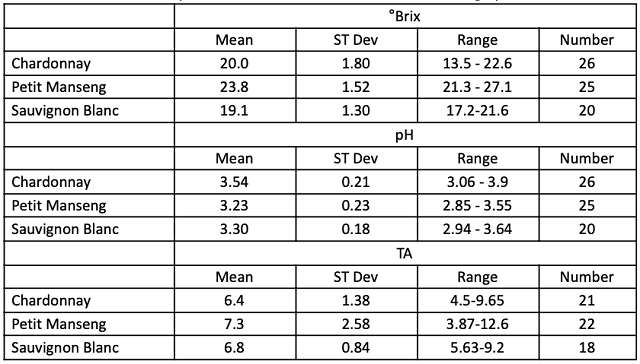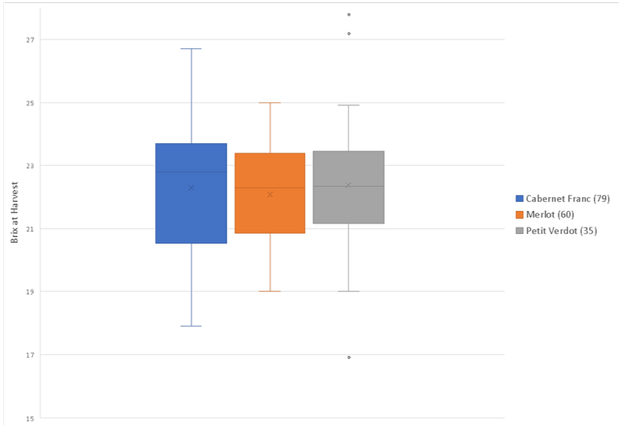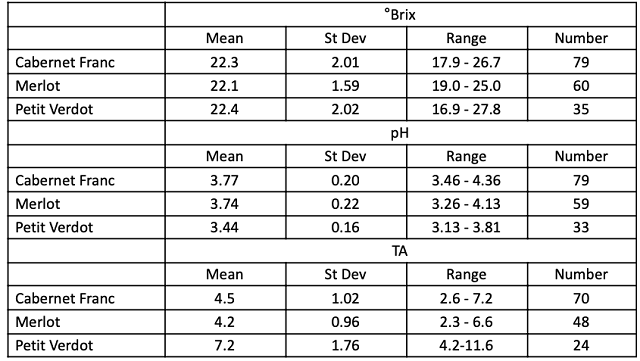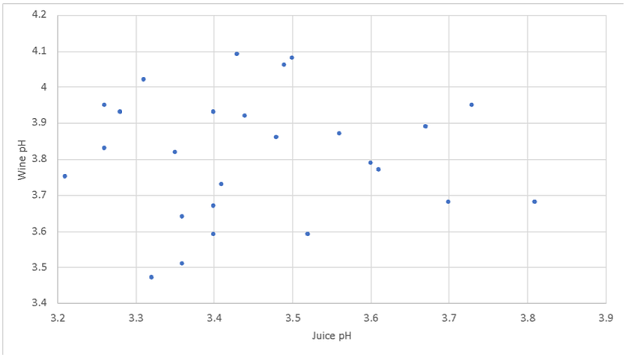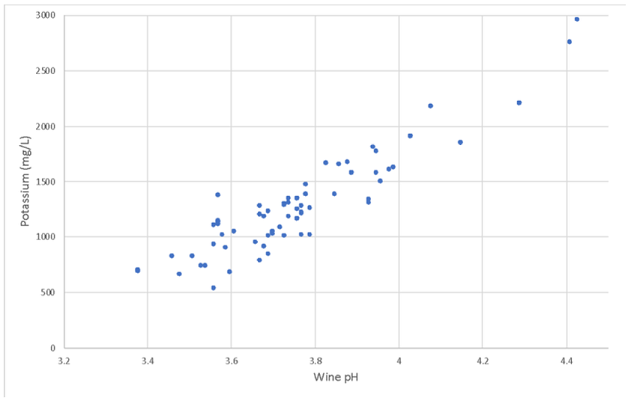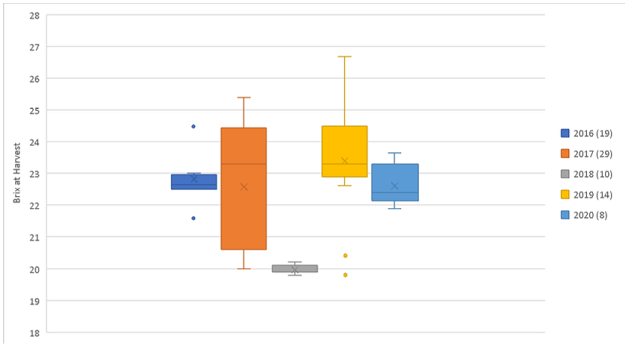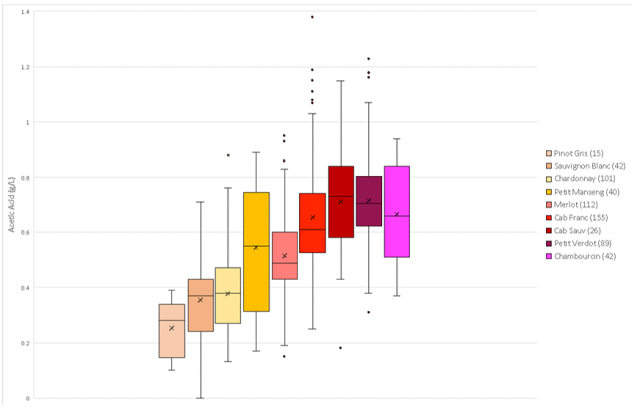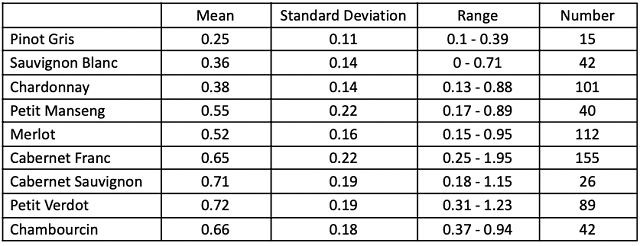Summary
In its six years of operation, the Virginia Winemakers Research Exchange has gathered data on grapes and wine as part of evaluating more than 300 practical vineyard and winery experiments completed throughout the state of Virginia. These data were initially reported with the experiments for which they were measured. The objective of this project was to gather these disparate sets of data into a single organized, searchable database and report summary statistics such as average, variation, and range for use by growers and winemakers to evaluate vineyard practices, grape pricing, winemaking decisions, and when interpreting future laboratory results. To complete the proposed analysis, electronic infrastructure was programmed to allow for fast, easy and accurate data entry by several parties into a centralized database for all WRE projects. All available data from past WRE projects were located and entered in the database. The existing dataset was analyzed to report summary statistics for metrics of interest and a workflow was planned for ongoing data entry in subsequent years. The database currently contains 856 unique entries from experiments conducted from 2014 - 2021. For white grapes, Sauvignon Blanc was harvested at the lowest Brix on average, while Petit Manseng had the highest Brix but lowest pH in the comparison. Red grape varieties showed a wide range of Brix at harvest within varieties, with very similar mean values between varieties. Though Petit Verdot was harvested with overall lower pH and higher titratable acidity than other red varieties, there was no correlation between the juice pH and pH of the finished wine. There was a strong correlation between potassium and wine pH (R²=0.845). On average, white wines complete fermentation with lower acetic acid than red wines, though more than 50% of the Petit Manseng wines used in WRE experiments completed fermentation with acetic acid above 0.5 g/L. The limit of detection for acetic acid in red wines is considered to be near 0.7 g/L. The average values for all of the reds except Merlot are at or near this threshold.

